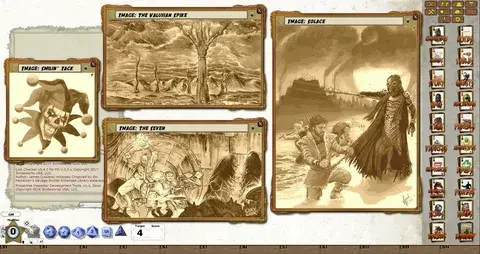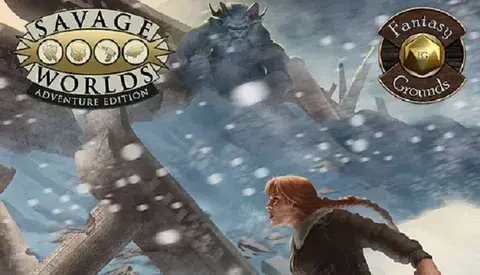When diving into Savage Worlds, especially the Savage Worlds Adventure Edition (SWADE), you quickly realize that this game system is all about versatility, speed, and making sure every moment counts. But there’s one game element that can throw even seasoned players for a loop — the Savage Worlds SWADE Hardness Table. How does it work? Why does it matter? And how can you use it to turn the tide in your favor?
Whether you’re a Game Master (GM) or a player, getting the hang of this table can be the difference between a dynamic adventure and a mechanical mess. Let’s break it down in a way that makes sense without all the confusing jargon.

Understanding Savage Worlds SWADE
If you’re new here, let’s start with the basics. Savage Worlds Adventure Edition (SWADE) is a tabletop role-playing game (RPG) system focusing on fast-paced gameplay and cinematic action. Unlike many RPGs bogged down in rules, Savage Worlds is built to be agile, letting the story take the lead.
But to understand the Hardness Table, we need to talk about two crucial game mechanics: Hardness and Toughness.
- Hardness: This relates to the durability of objects or structures. It measures how tough an inanimate thing is, like a door, wall, or vehicle.
- Toughness: This is more about the characters and creatures in the game. It keeps your hero standing when getting hit with everything the GM can throw at them.
Understanding the difference between these two is key. In the Savage Worlds SWADE system, the Hardness Table helps determine how much damage an object can withstand before breaking or shattering.
The Role of the Hardness Table in Gameplay
Now, why does the Savage Worlds SWADE Hardness Table even matter? Well, think of it like this: you’re in a game where your character needs to break through a door or blow up a machine. You need to know how much damage that object can handle before it gives way, right? This is where the Hardness Table comes into play.
- It evaluates the durability of objects in the game.
- It helps to simulate realistic scenarios, like the difference between hitting a wooden door and a reinforced steel barrier.
- It balances the gameplay, ensuring that breaking a flimsy item isn’t as difficult as destroying a heavily armored vehicle.
How the Hardness Table Works
Let’s examine the Hardness Table in more detail. Understanding how to use this table effectively can greatly affect the smoothness of your sessions.
Basics of Hardness Ratings
Objects in the game are assigned Hardness ratings that represent their durability. For example:
- Glass or Thin Wood: Hardness 3
- Reinforced Wood or Light Metal: Hardness 6
- Steel or Concrete: Hardness 10
- Reinforced Steel: Hardness 15 or higher
These ratings help you decide how much damage it takes to break through or destroy these objects during the game.
Using the Hardness Table in Gameplay
To put the Savage Worlds SWADE Hardness Table into action:
- Identify the object’s Hardness rating.
- Calculate the damage dealt by your attack.
- Subtract the Hardness value from the damage to see if the object takes any damage.
For example, if you hit a steel door (Hardness 10) with an attack that deals 12 damage, the door only takes 2 points of damage. It’s still standing but weakened.
Practical Applications of the Hardness Table
The Savage Worlds SWADE Hardness Table isn’t just for combat; it’s a tool to bring depth to your storytelling and strategy.
Breaking Objects and Barriers
You’re trying to smash through a wooden door to escape a burning building. The Hardness of that door might be around 4-6. Knowing this lets you gauge the effort needed to break it down.
Tips:
- Use team tactics: Multiple characters can work together to deal more damage.
- Apply creative thinking: Can you weaken the door by burning it or using tools instead of brute force?
Damaging Vehicles and Machinery
The Hardness Table becomes even more critical when dealing with vehicles like armored trucks or futuristic drones. Vehicles typically have higher Hardness ratings, making them more challenging to disable.
- Armored car: Hardness 15+
- Standard vehicle: Hardness 10-12
This tells you that precision attacks targeting weak points might be more effective than all-out brute force.


Environmental Hazards
Explosions, collapsing structures, or environmental effects also rely on Hardness values. If your party finds itself in a crumbling building, knowing the Hardness of the debris can dictate how they navigate or escape.
Advanced Tips for GMs and Players
Mastering the Savage Worlds SWADE Hardness Table isn’t just about knowing the numbers; it’s about using them to enhance gameplay.
Customizing Hardness Ratings
Every game setting is unique; sometimes, the standard Hardness ratings just don’t cut it. As a GM, you might need to tweak these values to fit your narrative.
- Custom materials: Create new Hardness ratings for exotic substances in your world.
- Scenario-based adjustments: Adjust the ratings based on weather conditions or magical effects.
Integrating Hardness into Storytelling
Hardness ratings don’t have to be just numbers; they can drive the plot forward. For instance:
- The team’s mission hinges on breaking into a fortified vault (Hardness 20).
- A legendary weapon that can shatter even the toughest armor becomes the object of a quest.
Common Mistakes and Strategies to Avoid
Even experienced players and GMs can stumble when using the Hardness Table. Here are a few common pitfalls and how to dodge them:
- Overcomplicating calculations: Keep it simple! The Hardness Table is there to streamline the process, not slow it down.
- Ignoring context: Make sure that Hardness values reflect the scenario. If a steel door has been weakened by fire, reduce its Hardness accordingly.
Best Practices:
- Always think about game flow. Don’t let rules get in the way of a good story.
- Use Hardness values that fit the tone of your narrative.
FAQs:
Q: What is the purpose of the Savage Worlds SWADE Hardness Table? The Hardness Table is used to determine the durability of objects in gameplay, helping to assess damage to non-living things.
Q: Can Hardness values be modified for specific campaigns?Absolutely! GMs are encouraged to adapt the Hardness Table to suit their unique campaign settings.
Q: How do Hardness values impact gameplay? They ensure realistic interactions with objects, making clear what’s easily destroyed and nearly indestructible.
Conclusion
Mastering the Savage Worlds SWADE Hardness Table isn’t just about crunching numbers; it’s about adding a new layer of strategy and realism to your game. Using it correctly makes your sessions more immersive, balanced, and engaging for players and GMs. This table is your secret weapon whether you’re busting down doors or trying to blow up a tank.

